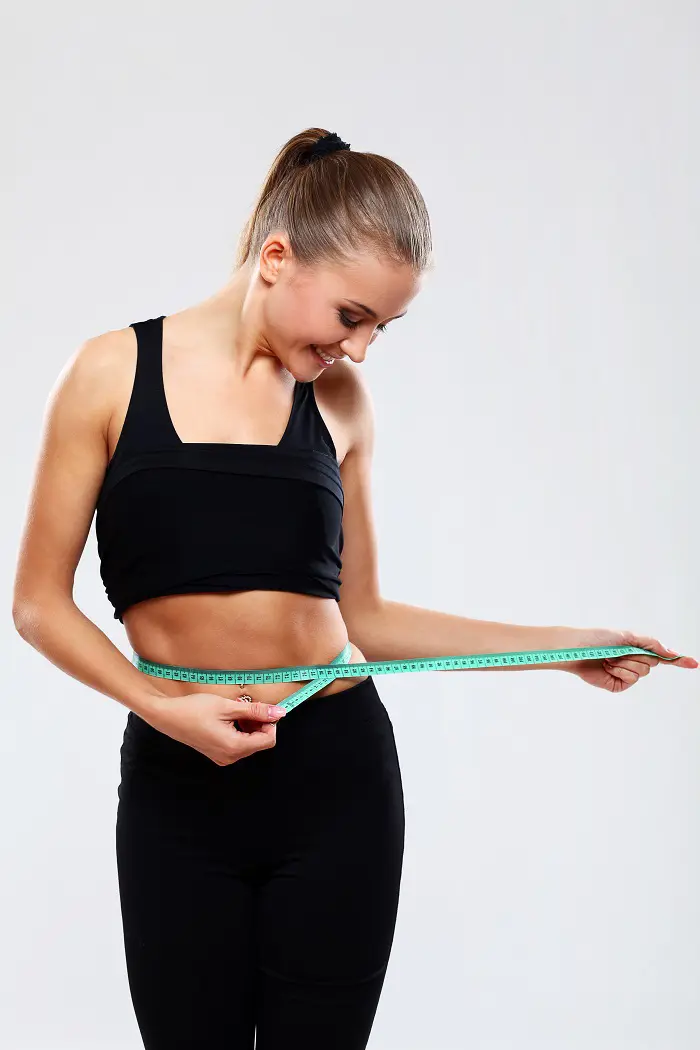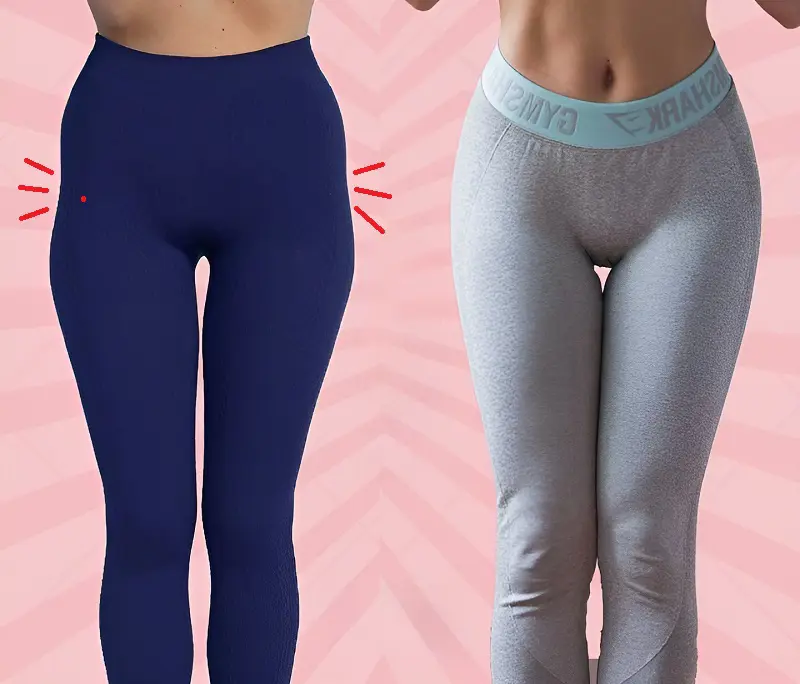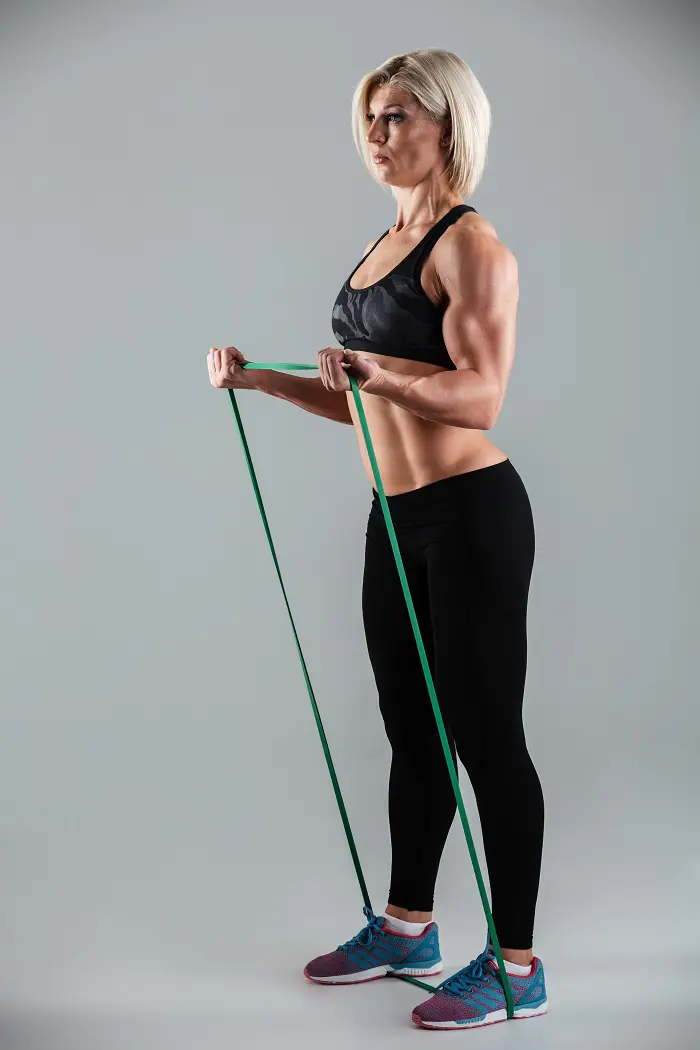Heart Rate Zones For Fat Loss: Age-Specific Calculations

The proper fat burning heart rate varies according to age group. The older someone is, the lower their fat burning zone will be. You can figure this zone out by subtracting your age from 220 and then taking 60% to 80% of that number.
Working out at the right heart rate for your age helps you burn fat faster. In this article, we'll dive into different heart rate zones for fat loss, so stick around, and find the perfect one for you.
Calculating Fat Burning Zone

To calculate the fat burning heart rate zone, one must initially find out the maximum heart rate (MHR). MHR is the maximum number of times your heart beats safely during one minute of exercise.
1. Firstly, calculate your MHR. You can calculate your MHR easily by following this formula:
- MHR=220-age
For instance, if you are 30 years old, your calculation would look like this:
- MHR=220-30=190 bpm
This means that for optimal performance, your heart rate should not go above 190 beats per minute during an activity. Understanding your MHR is important because it would enable you to determine your fat burn zone, which is between 60 and 80% of MHR.
2. After that, measure your burning fat zone with the help of two formulas:
- Lower limit: 60% of MHR
- Upper limit: 80% of MHR
For instance, if your MHR is 190 bpm, calculate the fat-burning zone in this manner:
- Lower limit: 190 x 0.60 = 114 bpm
- Upper limit: 190 x 0.80 = 152 bpm
This way, your fat burning zone falls between 114 and 152 bpm.
This heart rate zone for weight loss is where your body utilizes the most fat to meet the energy requirements in the body.
Burning Fat Zone By Age

The fat burn heart rate is the precise number of pulses per minute where the body meets the highest proportion of total calories required in exercising from fat.
This table shows the beats per minute (BPM) that have to be targeted for fat loss depending on age during exercise. Here’s a table that outlines the fat-burning heart rate zones by age:
| Age (Years) | Fat Burning Heart Rate (BPM) |
| 20 | 120-140 |
| 30 | 114-133 |
| 40 | 108-126 |
| 50 | 102-119 |
| 60 | 96-112 |
| 70 | 90-105 |
Age-Specific Heart Rate Zones
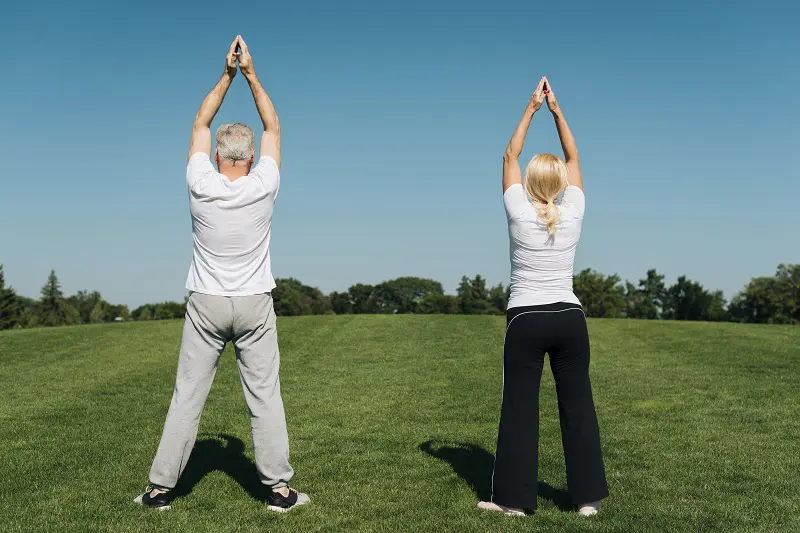
Another important factor in losing fat is knowing your age-specific heart rate zones. It is the desirable heart rate one should aim to acquire during certain fitness goals, such as fat loss or cardiovascular improvement.
The heart rate zone for fat burn ranges from very light activities to complete maximum exertion by the heart. This heart rate zone changes with age. It implies that to maintain a safe heart rate, older people have to work at a lower level of exertion.
| Age (Years) | Average Maximum Heart Rate (bpm) |
| 20 | 200 |
| 30 | 190 |
| 40 | 180 |
| 50 | 170 |
| 60 | 160 |
| 70 | 150 |
Different Heart Rate Zones For Fat Loss

An average person usually has five Heart Rate (HR) zones related to fat loss, denoting different intensities during exercise. However, it should be understood that no single burning fat zone is the same for everyone, and age plays a big role.
Zone 1: Very Light Training (50-60% of HR max)
This is the simplest zone and therefore is comfortable while performing many activities. It is perfect if used before or after a workout to bring body temperature to the desired range. You should be comfortable and able to converse freely without a lot of strain.
Workout:walking at a slow speed or gentle stretching.
Zone 2: Light Exercise (60-70% of HR max)
Here too, you feel comfortable, but your heart is responding at a faster rate. You may start panting a bit, but you are still able to speak. The aerobic base and endurance are best developed and trained in this area.
Workout: yoga, cycling, jogging, or brisk walking at a moderate pace
Zone 3: Moderate Exercise (70-80% of HR max)
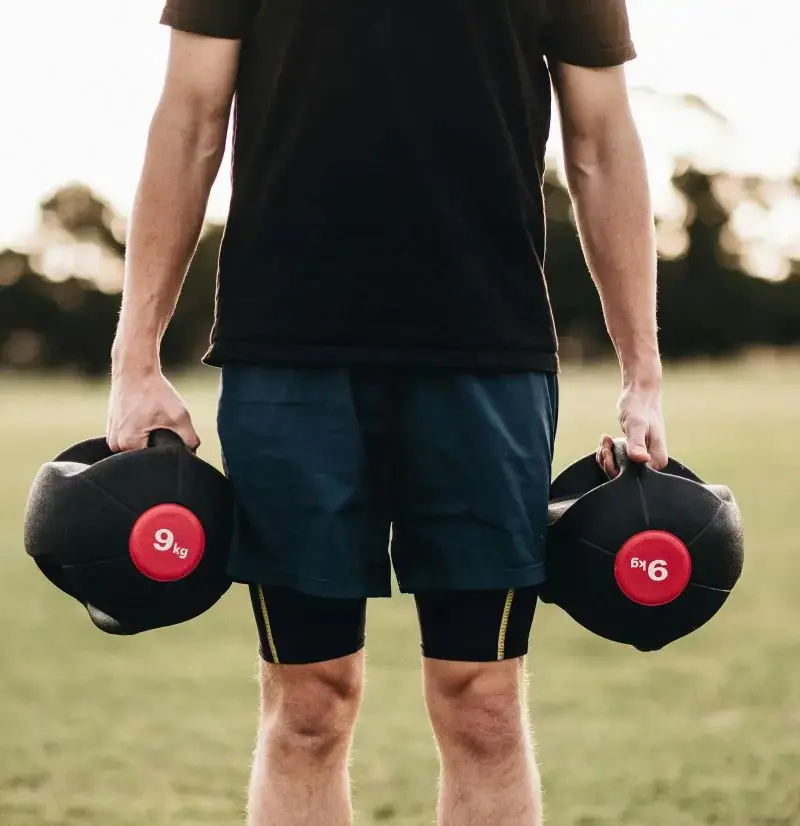
Here, you're working harder. The structure of the exercise should make you feel that you are only working at a moderate level. It’s going to be deeper and it will be harder to talk. This zone aids in enhancing the aerobic fitness as well as the endurance of the user.
Workout: running, cycling, or swimming for an intensity
Zone 4: Hard Exercise (80-90% of HR max)
This is a tough zone. Your breathing will be deep and rapid and you might also feel a level of tiredness on your muscles. Strength and speed are probably the two best ways of using it. But you can only sustain this kind of performance for a shorter time since it is not sustainable in the long run.
Workout: fast running or interval training
Zone 5: Maximum Effort (90-100% of HR max)
This is your over-the-top zone. You ought to feel very tired by now and this ought to be sustained for only a very short time. Your body primarily runs on carbs, and this one is ideal to enhance your utmost velocity and potency.
Workout: heavy lifting, sprinting, or HIIT
Significance of Heart Rate Zones
Splitting the exercise work into these heart rate zones will help you get more out of your program. Frankly, the exercise time will vary depending on the intentions.
For instance, if your goal is to lose fat, you will spend most of your time in Zone 2, where your body metabolizes more fat. On the other side, if you wanted to increase your speed, then you would concentrate more on Zones 4 and 5.
The Science Of Fat Burning

Our body uses fat stores whenever it needs energy, especially if you are in a calorie-restricted zone. This means you are using up more calories than you put in. Hormones trigger fat cells to release the stored fat, which is later utilized as energy.
Let's think of the human body as a car. When the car has a small amount of fuel, it will suddenly begin to use the last drop in it. Likewise, when you require energy, then the body dips into the fat deposits that are within it.
Fat vs. Carbohydrate Utilization During Exercise
The body primarily uses two macronutrients for energy during exercise: fats and carbohydrates. These factors are proportional to the intensity of the workout regime and the time taken to undertake the workout.
While at rest, fats are mainly used and generate about 85% of total energy while carbohydrates generate only about 15%. In the case of an intensive workout, the body turns towards carbohydrates for the energy requirement.
- Low-Intensity Exercise (50-65% VO2 max): Fats and carbohydrates both provide 50% of energy. The fat sources are mainly obtained from plasma-free fatty acids and intramuscular triglycerides.
- Moderate-Intensity Exercise (65-85% VO2 max): Carbohydrate turnover rises to become the major substrate. Different substrates are employed with more intensity, such as muscle glycogen and plasma glucose.
- High-Intensity Exercise (less than 85% VO2 max): Carbohydrate provides energy in nearly all functional energy demands because they can undergo anaerobic metabolism to generate energy quickly. The use of muscle glycogen rises significantly. In both absolute terms and as a percentage of total energy expenditure, fat oxidation is lowest during this period.
Importance of Overall Caloric Burn For Fat Loss

In the context of fat loss, most individuals are accustomed to the process of fat-burning during exercises. However, as everyone often stresses, it is the total number of calories that are burnt that counts in weight loss, particularly in burning fats.
So, it means concentration on the number of calories used up in total, as against the percentage of fat used up during exercise.
Understanding Caloric Burn
Calories are what your body needs for you to perform all your activities throughout the day. Calories are burnt all through the day, during exercise, work, or even when at rest, such as sleeping.
If one wants to lose fat mass, simply focus on expending more calories as compared to the number of calories taken in the diet. This results in a caloric deficit, which is important in weight loss. Another tip for increasing total daily caloric expenditure is through intense physical activity.
Misconception of Lower Intensity Exercise for Fat Loss
Low-intensity exercise means the body does use up more fat. However, the number of calories that are likely to be burnt during the workout is smaller than in higher-intensity exercise.
For example, if an individual burns 100 calories in a low-intensity exercise, they might have burnt 60 calories from fat as a result of the 60% reserve of fat calories.
If you decide to go for high-intensity training that takes 500 calories, irrespective of the fact that only 40 percent of calories are derived from fat, you will have burnt 200 calories from fat. So, you will burn more fat, even if a lesser percentage of fat is used.
Why Does Higher Intensity Matter?
Vigorous exercises such as sprinting, interval training, or any other form that involves maximum effort tend to cause a higher total calorie burn. This is important because fat can only be burnt by following a strict routine.
There is also the phenomenon called the afterburn, where you continue to burn calories at a faster pace after the training sessions. This effect can last for hours, making the total calories burned very high.
Monitoring Tools For Heart Rate

Heart rate monitoring during workouts is an effective way to get the benefits of improving the efficiency of workouts. It is useful to know how much effort your body is putting in and to ensure the appropriate training for your desired outcomes.
Here are some tools to monitor your heart rate zone for fat burn:
1. Smartwatches and Fitness Trackers
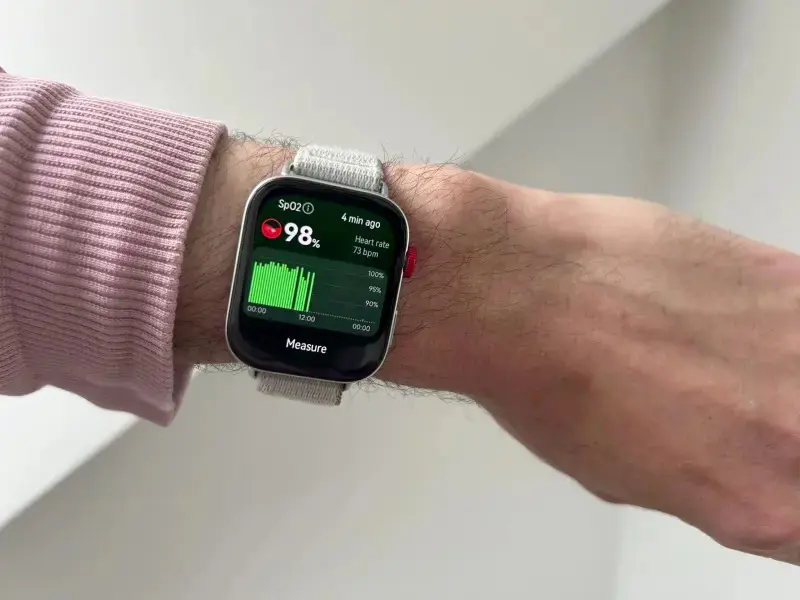
These devices are one of the most popular tools for monitoring your heart rate zone for fat burn. These are portable and are accompanied by different features that will assist you in monitoring your level of achievement.
- Fitbit Sense 2: Many users are aware of its heart rate monitoring ability, but it is also equipped with features that measure blood oxygen level and breathing rate. They can even track your cardio fitness levels. Therefore, it is an all-in-one health-tracking tool.
- Amazfit Bip U Pro: If you are tight on cash, this small and inexpensive fitness tracker monitors your heart rate during exercise. It also uses different sports modes, allowing anyone interested in sports to use it in their training without spending a fortune.
These devices allow you to monitor your pulse at a glance and, therefore, regulate exercise intensity if necessary.
2. Chest Strap Monitors
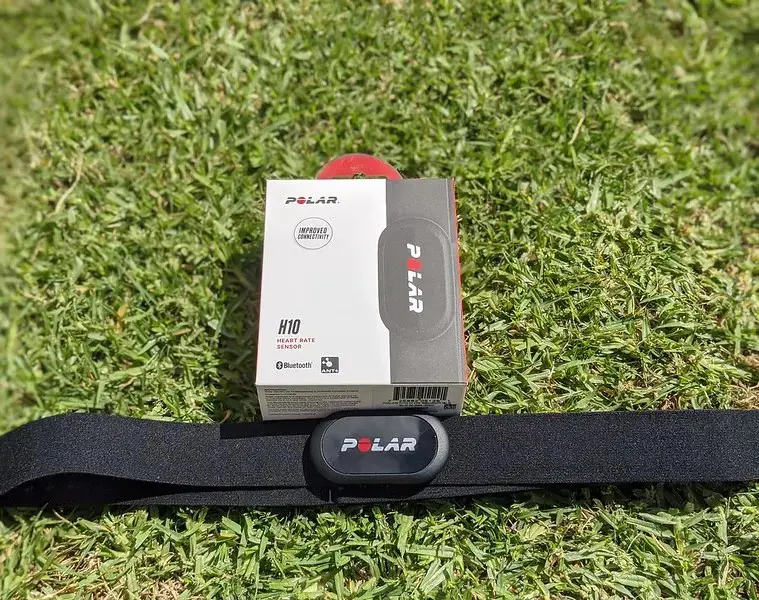
This device is ideal for those looking to obtain accurate results. These devices employ electric pads to track the number of times your heart strikes within certain periods and usually give more accurate results as compared to wrist-worn ones.
- Polar H10: This device is characterized by its accuracy and comfortable fit. For instance, it syncs with most fitness applications and gadgets to monitor your heartbeat rate whenever you are exercising.
- Garmin HRM-Pro: This monitor is for professional athletes as it offers data on heart rate and other aspects such as running dynamics and even calorie counters.
3. Manual Methods
If you don't fancy the above methods, you can still check your heart rate in an orthodox way. Here's how:
- Find Your Pulse: Press down lightly with your fingers to the inside of your wrist or on your neck using your index and middle fingers.
- Count Your Beats: For 30 seconds, count the number of beats you get.
- Calculate Your Heart Rate: Double that number to get your heart rate per minute or bpm for beats per minute.
Although this method is straightforward, it can be quite invasive during a workout since it breaks concentration to check your pulse.
4. Rate of Perceived Exertion (RPE)
This is a self-reporting tool in which there is a perceived exertion scale of 0 to 10, which you consider based on how hard you are working.
- 0: No physical stress, resting
- 5: Moderate to somewhat hard effort
- 10: Overexertion at the highest level
Engaging in RPE can enable the individual to monitor the body without having to rely on the use of a device.
Other Ways To Lose Fat
Here are some other effective ways to lose fat besides focusing on fat burning heart rate:
- Increasing daily activity: Certain things can be done to lose some calories, such as taking stairs instead of elevators or parking the car far from the office or home. Instead of sitting down in the meeting, take a walking meeting.
- Focusing on nutrition: The equation is consuming fewer calories, in other words, going below your maintenance level to lose fat.
- Managing stress: Stress leads to an increase in cortisol levels, and this encourages the storage of fats. It is good to release some stress by practicing meditation, yoga, or deep breaths.
- Drinking more water: Intake of water specifically at breakfast and during the first meal may be of help in decreasing the level of hunger and facilitating metabolism. Normal water intake for an adult is at least 8 cups or 64 oz per day.
Recent posts
How To
How To
A Proper Guide On How To Do The Splits For Beginners
Learning how to do the splits is the ultimate goal for every gymnast and fitness enthusiast. Spreading the legs to a 180-degree angle is a true testament to athletic power and flexibility. As a beginner, it might feel intimidating at first, but with ...
How To
A Guide On How To Measure Your Waist Correctly
Measuring an individual’s waist is crucial for assessing internal fat deposits that surround the heart. It can indicate a person’s current health status, with a larger waistline suggesting a higher risk of heart disease and stroke. Along ...
How To
Hip Dips: What Are They And How To Get Rid Of?
Hip dips are slight indentations on the outer hips, appearing as small inward curves when viewed from the front. They are usually due to the protrusion in the pelvic structure and are largely determined by genetics. Many women aim for a more rounded ...
How To
How To Calculate Calorie Deficit For Weight Reduction
The term "calorie deficit" refers to burning more calories than we consume. It's a popular approach for losing weight and staying in shape. Achieving a calorie deficit could be tricky, as it requires consistent tracking, healthy habits, and accurate ...
How To
How To Get Veiny Arms And Increase Your Vascularity
Getting veiny arms require proper workout plans, a balanced diet, and consistent hydration. All of them play a vital role in enhancing our vascularity by improving muscle tone, enhancing circulation, and reducing body fat. We can also achieve veiny a...
How To
How To Increase VO2 Max For Better Physical Fitness
VO2 max is a crucial indication of cardiovascular health, which measures how well your body utilizes oxygen during exercise. Improving it enhances energy levels, increases endurance, and strengthens athletic performance. A higher VO2 max requires con...

